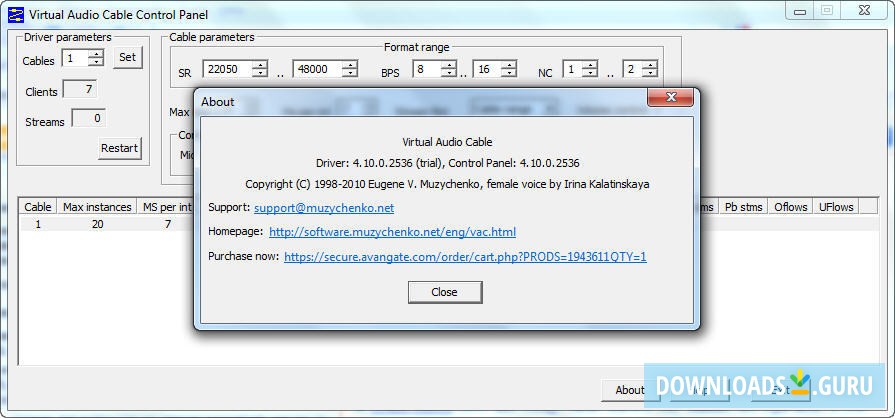

Virtual Audio Cable works with 32- and 64-bit versions of Microsoft’s Windows operating system. I think it’s worth taking a look at what this software application can’t do, don’t you think? You cannot use VAC to render a MIDI sequence to an audio signal, you cannot use VAC to secretly intercept an audio signal unless a virtual cable is explicitly inserted into the signal path, you cannot use VAC to transfer audio data over a network. That pretty much takes care of what Virtual Audio Cable can do. On top of connecting two or more applications, you can also use it to: intercept the digital audio signal from applications that are playing it record bitperfect digital audio data produced by applications that don’t create WAV files digitally mix several audio sources and route the resulting audio stream to a recording application share an audio stream convert audio data from one format to another and more. That’s not all that you can do with Virtual Audio Cable. Virtual Audio Cable (VAC for short) uses virtual cables to connect Windows audio applications.

Why do I bring this up? Only to mention that Eugene Muzychenko took this concept and turned it virtual. To connect them, you need an analog or a digital cable.


 0 kommentar(er)
0 kommentar(er)
